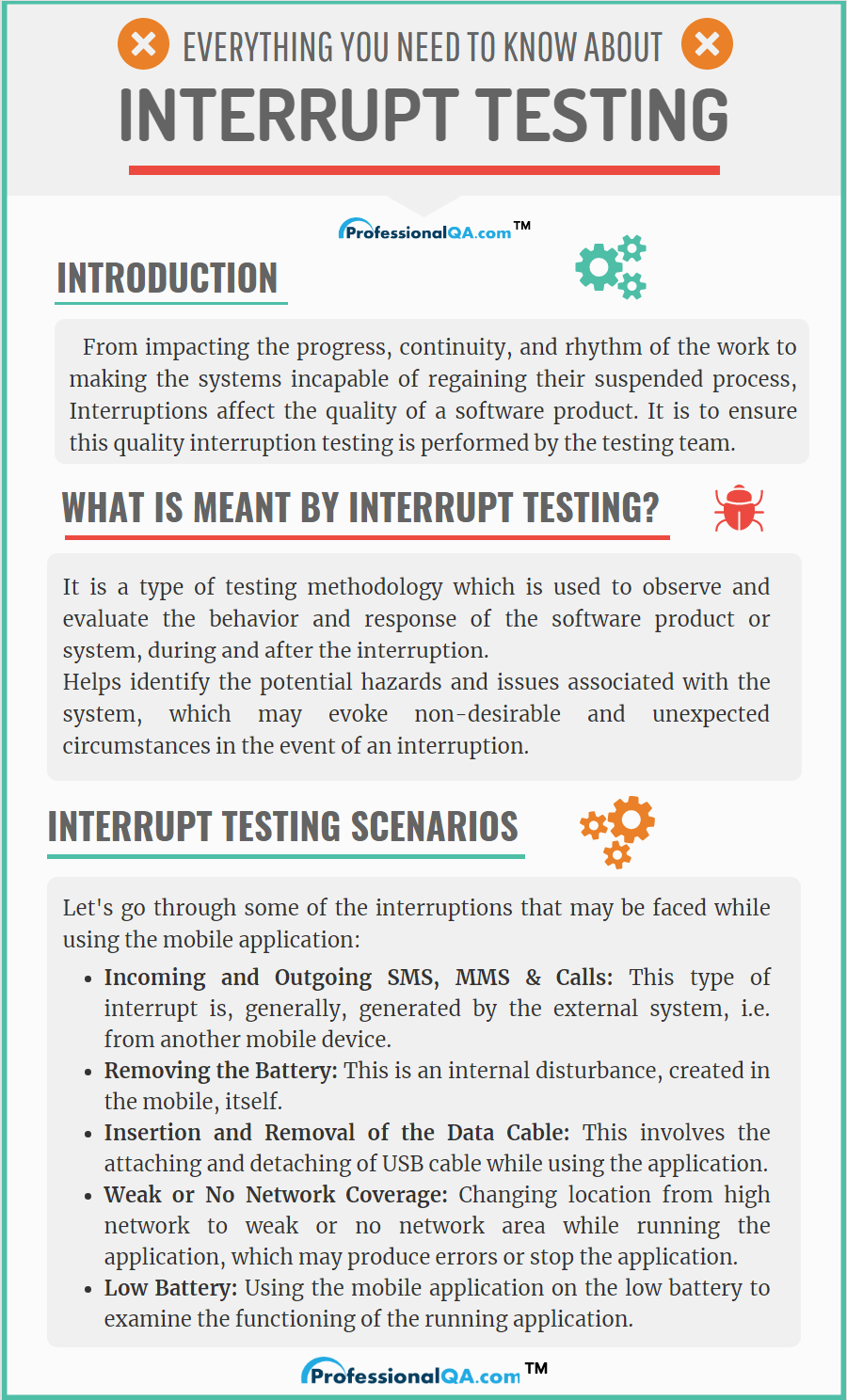

The word "interruption" does not soothe to anyone's eyes, unless it's consequences, have better prospects, in a larger ratio, to the work, which was being interrupted.
Any kind of interruption, in any sort of work, is not acceptable. It not only affects the progress of the work but also breaks the continuity and rhythm, attached to the work. However, human beings have the capability to recall and carry on with their halted task or work, even after being interrupted, but with the loss of focus and rhythm. But, what about out the machines or systems. Are they capable of regaining their suspended process and thereafter, progressing with it, further? This quality of the system or software product is being ensured by the interrupt testing.
It is a type of testing methodology, which is used to observe and evaluate the behaviour and response of the software product or system during and after the interruption. This helps in identifying the potential hazards and issues associated with the system which may evoke non-desirable and unexpected circumstances in the event of an interruption.
Generally, interrupt testing is one of the types of mobile testing and is used to test the mobile applications. We may construe the interrupt testing as a mobile testing type, used to test mobile application's function's performance, after going through the interrupted state. This type of testing, basically involves the wilfully creating disturbances in the functioning of the mobile applications, and thereafter, observing and assessing the responses.

Possible interruptions that may be faced, while using the mobile or mobile application, are the resultant test scenarios to carry out the interrupt testing. Let's go through some of them
This type of interrupt is, generally, generated by the external system, i.e. from another mobile device. It is expected from the mobile applications to hassle-free resume their suspended work or process, after being got interrupted.
This is an internal disturbance, created in the mobile, itself. All we need to do is to remove the mobile battery while using the application(s). Thereafter, placing the battery in the mobile, and restarting it. Check the functioning of the application that was running, during the removal of the battery.
This involves the attaching and detaching of USB cable while using the application. It is used to check whether the dialog box for the data cable notification does not hinder or crashes the application.
Changing location from high or full network to weak or no network area while running the application especially network or web-based, which may produce errors or stops the application. Thereafter, again shifting to the sufficient or high network area to check whether the application has resumed its working and is functioning smoothly.
Using the mobile application, on low battery, intentionally, to examine, if low battery alert message, obstructs the functioning of the running application. Further, in an extreme case, the whole battery may gets drained out, and the mobile gets switched off. Therefore, it is required to check that on restarting the mobile device, the application is working appropriately or not.
Apart from the above-mentioned test scenarios, a tester may adopt or emulate other possible scenarios, to carry out the testing, with the help of either simulators or real devices. Thus, it may be concluded that the benefits associated with the interrupt testing, makes it equally important to usability, compatibility and other forms of performance testing.
Advertisement: